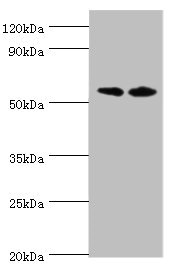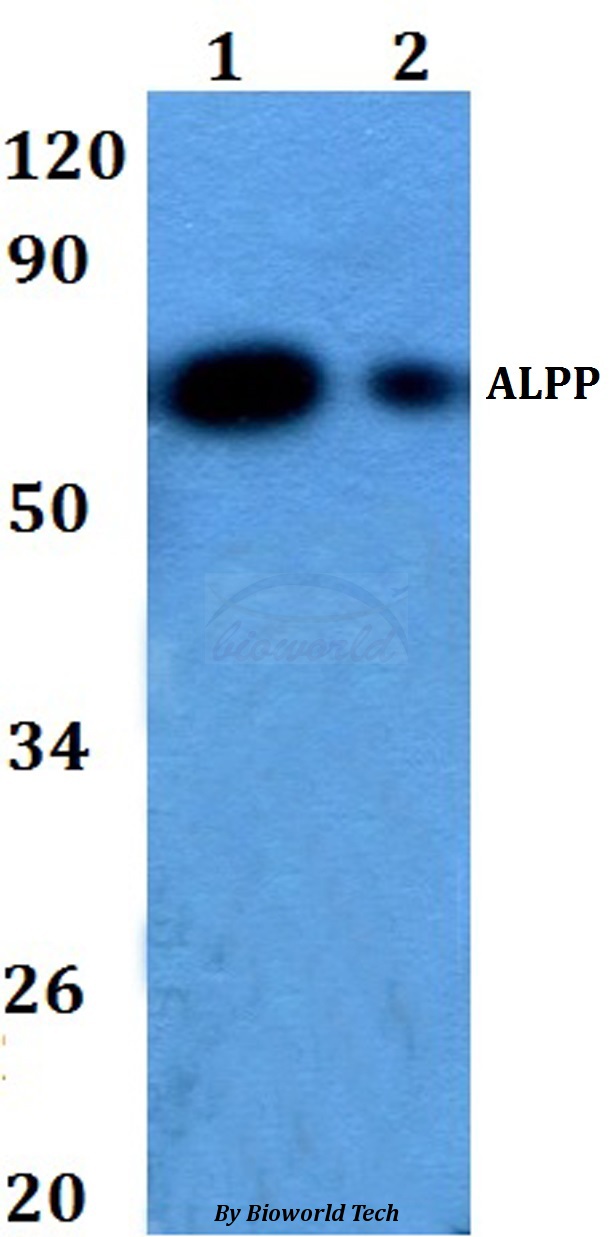Alkaline Phosphatase (Placental) / PLAP (Germ Cell Tumor Marker)(ALPP/516), Biotin conjugate, 0.1mg/mL [26628-22-8]
BNCB0516
TargetALPP
Product group Antibodies
Overview
- SupplierBiotium
- Product NameAlkaline Phosphatase (Placental) / PLAP (Germ Cell Tumor Marker)(ALPP/516), Biotin conjugate, 0.1mg/mL
- Delivery Days Customer9
- CertificationResearch Use Only
- ClonalityMonoclonal
- Clone IDALPP/516
- Concentration0.1 mg/ml
- ConjugateBiotin
- Gene ID250
- Target nameALPP
- Target descriptionalkaline phosphatase, placental
- Target synonymsalkaline phosphatase Regan isozyme; alkaline phosphatase, placental type; alkaline phosphomonoesterase; ALP; ALPI; glycerophosphatase; IAP; Intestinal alkaline phosphatase; Intestinal-type alkaline phosphatase; PALP; placental alkaline phosphatase 1; PLAP; PLAP-1
- HostMouse
- IsotypeIgG1
- Protein IDP05187
- Protein NameAlkaline phosphatase, placental type
- Scientific DescriptionThis antibody reacts with placental alkaline phosphatase. There are at least four distinct but related alkaline phosphatases: intestinal, placental (PLAP), placental-like, and liver/bone/kidney (tissue non-specific). The first three are located together on chromosome 2, while the tissue non-specific form is located on chromosome 1. PLAP is a tissue specific, trophoblast-derived, 70 kDa, glycosyl-phosphatidylinositol (GPI)-anchored, dimeric, zinc metallo-glycoprotein that catalyzes the hydrolysis of phosphomonoesters into an inorganic phosphate and an alcohol. It is present in the placenta and serum of pregnant women and in high frequency in gynecological and testicular cancers and in lower frequency in other tumors. The three tissue-specific APs in humans, PLAP, germ cell AP (GCAP) and intestinal AP, are 90-98% homologous. Non-tissue specific AP is found in kidney, liver and bone. This MAb binds equally well to all common allelic variants (S, F, FS and I) of PLAP and to some variants of AP from normal human testis. This MAb can be used as tracer antibody in ELISA to detect PLAP in serum of S, F, FS and I phenotypes. Primary antibodies are available purified, or with a selection of fluorescent CF® Dyes and other labels. CF® Dyes offer exceptional brightness and photostability. Note: Conjugates of blue fluorescent dyes like CF®405S and CF®405M are not recommended for detecting low abundance targets, because blue dyes have lower fluorescence and can give higher non-specific background than other dye colors.
- SourceAnimal
- Storage Instruction2°C to 8°C
- UNSPSC12352203






